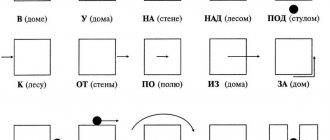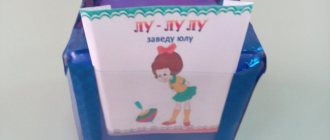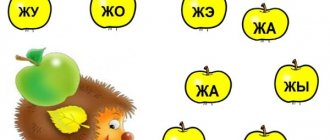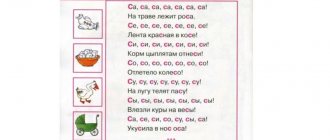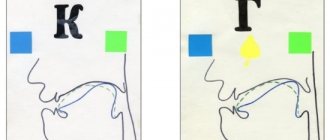Books to help
Speech therapy massage and articulation gymnastics. Practical guide, ed. Krause E. N.
Description: This methodological guide is a reminder for beginning speech therapists and a training manual for parents who want to help their children overcome various types of speech defects.
Stuttering plans
Stuttering plans
Speech therapist lessons. Correction of speech disorders. Zhukova N.S.
The proposed manual “Lessons of a speech therapist” is intended for speech therapists, educators, Russian language teachers and their students.
In its methodological part, it can be used by teachers of speech technology and people of speech professions who want to improve their diction.
Speech therapy massage for dysarthria. Arkhipova E.F.
Massage is a method of treatment and prevention, which is a set of techniques of mechanical influence on various areas of the surface of the human body. The mechanical effect changes the condition of the muscles, creates positive kinesthesia necessary for normalizing the pronunciation aspect of speech.
Automation of the sound Рь in game exercises. Album of preschooler L. A. Komarov
The manual offers a system of exercises for automating sounds for preschoolers aged 4-7 years, which turns the monotonous and monotonous work of strengthening the pronunciation of sounds into an interesting game. Along with its automation, the child’s reading skills improve, fine motor skills and creative imagination develop.
The manual is intended for individual work with a child and is addressed to speech therapists, teachers of speech therapy groups and parents of children with speech disorders.
Automation of the sound R in game exercises. Preschooler's albumL. A. Komarova
The manual offers a system of exercises for automating the sound “R” for preschoolers aged 4-7 years, which turns the monotonous and monotonous work of consolidating the pronunciation of the sound into an interesting game. Along with its automation, the child’s reading skills improve, fine motor skills and creative imagination develop.
Speech therapist lessons. Correction of speech disorders. Nadezhda Zhukova
Nadezhda Sergeevna Zhukova is a well-known speech therapist with thirty years of experience, candidate of pedagogical sciences. She is the author of original research on speech development in preschool children. The best traditions of such famous Soviet teachers and speech therapists-practitioners as E.F. Rau, A.G. Ippolitova were continued in the new book by N.S. Zhukova: “Lessons of a Speech Therapist.”
The textbook “Lessons of a Speech Therapist” will solve speech problems at any age scientifically, thoroughly, radically and forever.
Multifunctional correctional and developmental aids for automation and differentiation of speech sounds
Regina Yarullina
Multifunctional correctional and developmental aids for automation and differentiation of speech sounds
Goal: to increase the effectiveness of correctional and developmental work on the formation of correct sound pronunciation in preschoolers with various speech , to involve parents in the educational process and to make homework on automating sounds easier and more accessible.
Tasks:
To increase interest and motivation in preschoolers for speech therapy classes
Develop the correct articulatory patterns of sounds using game articulatory gymnastics
Consistently automate set sounds in syllables , words, phrases, sentences
Practice determining the position of automated sounds in a word
Develop the ability to differentiate automated sounds in your speech and use them correctly
Develop fine motor skills
Develop phonemic hearing and perception
Develop coherent speech
Form the lexical and grammatical structure of speech
Develop attention, memory, thinking, imagination and perception
Strengthen the skills of sound analysis and synthesis
Develop control over your own speech
Form elementary mathematical concepts in preschoolers
Introduce parents to the sequential stages and various techniques for automating sounds
Provide practical assistance to parents in completing homework on automation and differentiation of speech sounds .
Description:
Writer L. S. Sukhorukov wrote that “our speech is the most important part not only of our behavior, but also of our personality, our soul, and mind.”
Timely mastery of all aspects of speech in preschool age is of great importance for the formation of a child’s full-fledged personality and his successful education at school.
A child with well-developed speech easily enters into dialogue, he can freely express his thoughts and desires, ask questions, agree on joint activities, and conversely, unclear speech makes relationships with others very difficult and often leaves a heavy imprint on his character.
Based on the above, my main goal, as a teacher-speech therapist, is to help children master correct, clear, expressive speech with an age-appropriate vocabulary and level of development of coherent speech , through the use of various methods and techniques of speech therapy aimed at correcting speech defects .
Most often, speech defects are observed in sound pronunciation , which is quite difficult to form correctly, since the child needs to learn to control his organs of articulation, to exercise control over his own speech and the speech of others.
Correction of impaired pronunciation is carried out step by step and sequentially. The stage of automation of sounds is designated in the methodology of speech therapy for correcting sound pronunciation as the stage of formation of primary pronunciation skills (according to L. S. Volkova)
.
Its goal is to teach the child to correctly pronounce an already delivered sound .
As you know, pronunciation is first fixed in isolation, then in syllables, words, phrases. In parallel, the work begun in the preparatory period continues to develop sound analysis , the ability to determine the position of a sound in a word , and select words with a given sound . To automate sound, techniques of reflected repetition and independent naming of language units from pictures, diagrams, and symbols are used. The work proceeds sequentially and gradually, from simple to complex.
In case of severe speech disorders, the stage of automation is delayed ; for a long time, the child is unable to correctly pronounce the given sound in syllables and words , not to mention phrases. Repeated repetition of the same speech material tires the child. The matter is further complicated by the fact that for some sounds the speech material is very limited (for example, [g], [d], [y], [sch], etc.)
.
If the child is “stuck”
on
automating isolated sound , then there is no need to talk about the variety of techniques.
Therefore, so that the child does not lose interest in classes and the desire to visit the speech therapist’s office, I look for new approaches to the same exercises, try to diversify gaming methods and techniques of my work, give children new creative tasks to consolidate correct pronunciation. The constant search for new gaming techniques led me to create multifunctional Velcro aids for automating and differentiating speech sounds . These manuals are intended for individual lessons with preschool children. Each manual contains a lot of games with varied and colorful speech material, with changing plots and exercises based on articulatory gymnastics techniques, and stages of automation and differentiation of speech sounds .
Results achieved:
The use of these benefits in work made it possible to create the most favorable conditions for the development speech and increase interest in speech therapy classes.
Children began to consolidate the sounds , and creating their own stories in the game allowed them to easily introduce automated sounds into independent speech. Children have improved their ability to correctly construct lexical and grammatical sentences, train auditory and visual memory, develop thinking, memory, attention, and form elementary mathematical concepts.
Parents, with the help of a manual at home, practiced the acquired skills in their children’s classes, which contributed to the improvement of sound pronunciation in preschoolers .
Social significance:
Correct speech is the most important mental function of a person. Speech communication promotes social contact between people, thanks to which higher forms of activity develop. The richer and more correct a child’s speech, the easier he expresses his thoughts, the better he understands reality, the more fully he builds relationships with children and adults, which is one of the keys to a person’s success in the modern world.
Thus, the availability of manuals to a wider audience made it possible to include parents in joint work, create a unified space for the child’s speech development and significantly increase the effectiveness of correctional speech therapy work on the formation of correct sound pronunciation in preschool children with various speech .
General requirements for work to correct deficiencies in sound pronunciation
When forming correct sound pronunciation in children, regardless of the causes and nature of dyslalia, a number of general requirements must be met.
Thus, when eliminating deficiencies in the pronunciation of a particular sound, it is necessary to adhere to a strict sequence of stages of speech therapy work:
1. Development of auditory attention and phonemic perception of the generated sound.
2. Articulation gymnastics.
3. Sound production.
4. Sound automation.
5. Differentiation of formed and mixed sounds in pronunciation.
If the child clearly perceives the formed phoneme by ear, the first stage of work can be eliminated.
Sometimes it turns out that a child, without preliminary articulatory gymnastics, reproduces all the differentiated movements of the tongue and lips necessary for a given sound. In this case, you can eliminate the second stage of work. However, it must be emphasized that the sequence of all other stages must be strictly observed.
When producing sounds, extensive use should be made of various analyzers (auditory, visual, skin and motor), which facilitates the reproduction of the required articulation according to the model and control over it.
As the skills of correct pronunciation of sound are automated, the need for visual control disappears. Further work is carried out based on auditory and kinesthetic self-control.
From the very beginning of working on sound, it is necessary to develop auditory self-control in the child. For this purpose, the speech therapist draws the child’s attention to the incorrect pronunciation of the sound and offers to compare it with the correct one. It is advisable for the speech therapist to imitate the distorted pronunciation, alternating it with the normal one, and the child compares both options and reproduces the correct one. Children should be constantly reminded to listen to how they pronounce. At first, the child’s exaggerated pronunciation of the sound is useful. This will make it easier for him to acquire auditory self-control skills.
You can move on to automating a given sound only when the child pronounces it in isolation completely correctly and clearly with prolonged or multiple repetitions. In no case should you introduce into syllables and words a sound that is not yet pronounced clearly enough, as this will only lead to the consolidation of incorrect skills and will not improve pronunciation.
Automation of the supplied sound must be carried out in a strict sequence:
Stages of speech therapy work to correct sound pronunciation
Tatiana Borisova
Stages of speech therapy work to correct sound pronunciation
Preparatory stage
Articulation. The set of movements and positions of the speech organs - lips, tongue, etc., necessary for the formation of sounds .
Developing correct articulation of a disturbed sound is possible if you have well-formed articulatory motor skills, i.e., the ability to control the organs of speech and speech breathing. It is necessary to learn to tense and relax the tongue, hold it in the desired position, direct the air stream in the right direction, and coordinate the coordinated work of various organs of articulation.
This purpose is served by articulatory gymnastics - a set of special exercises for the lips and tongue.
Articulatory gymnastics is designed to develop in a fun way the child’s ability to control his own speech organs: tongue, lips, lower jaw and speech breathing.
For such work , certain conditions must be met.
Performing articulatory gymnastics should be mandatory during the period of preparing articulatory structure and sound .
It should be carried out regularly.
Duration of classes is 3-5 minutes.
Exercises are performed at a moderate pace with mandatory visual control. It is advisable that both the child and the adult can be in front of the mirror: the adult shows a sample of the exercise, the child repeats after him.
The movements of the tip of the tongue and lips in the baby’s imagination can be associated with already familiar images, developing his imagination and emotional sphere, and turning difficult work into an exciting educational moment.
Sound production stage
Sound production is the process of forming articulation, teaching a child to pronounce a sound in an isolated sound. At the stage of sound production, the skill of correct pronunciation of an isolated sound , the auditory, kinesthetic image of the sound , and the visual perception of articulation is used.
At this stage, speech therapy work is carried out in the following areas: development of speech perception, formation of phonemic analysis, development of articulatory motor skills, work on direct sound .
The development of speech perception, as in the preparatory stage , is carried out using tasks for simulating syllables . Syllables with consonant clusters are offered (which are pronounced correctly)
.
The development of phonemic perception, analysis and synthesis presupposes the formation of the ability to isolate the sound being practiced in a word , determine its place, and differentiate it from other sounds , especially from those that are articulatory and acoustically distant. Taking into account the level of mastery of the phonemic side of speech, it is possible to work on complex forms of phonemic analysis: determine the number of sounds in words of the sound on it . It must be remembered that at this stage , phonemic analysis is carried out by children only on the basis of auditory perception of the word, without pronouncing it.
At the stage of sound production, much attention is paid to the development of speech motor skills (kinetic and kinesthetic basis of articulatory movements)
.
Work continues to consolidate speech breathing skills, develop the voice, and articulatory movements.
The development of articulatory motor skills is carried out in the form of articulatory gymnastics. Articulatory gymnastics is a specific set of exercises for the lips and tongue, preparing the correct pronunciation of sounds . The goal of articulatory gymnastics is to practice each element of the articulatory structure.
The set of articulatory exercises is determined by the normal articulation of sound and the nature of the defect. For each sound, a specific system of articulatory exercises is recommended.
Articulatory gymnastics is usually carried out by imitation, in front of a mirror. If movements fail, mechanical assistance is used. Subsequently, they move from passive execution of movements to active actions.
At the stage of sound production, the same requirements are imposed on articulatory exercises as at the preparatory stage . Movements of the organs of articulation must be accurate, smooth, without accompanying movements, performed with normal muscle tone, without excessive tension and lethargy. Attention is paid to a sufficient range of movements, to the ability to hold the position of the articulatory organs for a certain time, to the switchability of movements.
After practicing isolated elements, the movements are combined and included in a single articulatory pattern.
There are several ways to produce sound :
1. By imitation - based on the auditory image, on the visual perception of articulation. This is due to the fact that children have fairly well developed imitation. However, by imitation, most often it is possible to create a sound only when it is absent. In mentally retarded children, sound by imitation is extremely rare.
2. Mechanical method of placement using auxiliary means (spatula, probe, etc.)
.
With mechanical assistance, the articulatory organs are given a certain position. For example, a child pronounces the sound “s”, the speech therapist places a probe or spatula under the tongue and slightly lifts it towards the upper alveoli, a hissing sound . With this method, the child himself does not search; his organs of articulation only obey the actions of the speech therapist .
After long training, he takes the necessary position without mechanical assistance, helping himself with a spatula or finger. 3. Production from other sounds , correctly pronounced, without mechanical assistance. For example, the sound “s” can be placed from the sound “i”. It is suggested to pronounce the sound “and”, bite the side edges of the tongue with the molars, and blow on the back of the tongue so that the breeze “walks”
on the tongue.
4. Staging sound from the articulatory structure. For example, the sound “sh” can be placed from “cup”
.
The child is asked to make a “cup”
outside the oral cavity, remove it inside the mouth and blow on the tongue.
5. The mixed method of production is based on the combination of previous methods of sound .
Sound automation stage
From a physiological point of view, the stage of sound automation is the consolidation of conditioned reflex speech-motor connections on various speech material. The delivered sound is still very fragile ; the conditioned reflex connection without reinforcement can quickly collapse. Automating sound means introducing it into syllables, words, sentences, and coherent speech. Children with sound pronunciation have fixed stereotypes of incorrect pronunciation of words, sentences, etc.
to automating a given sound only when the child pronounces it in isolation completely correctly and clearly with prolonged or multiple repetitions. In no case should you introduce into syllables and words a sound that is not yet pronounced clearly enough, as this will only lead to the consolidation of incorrect skills and will not improve pronunciation.
Automation of the supplied sound must be carried out in a strict sequence:
automation of sound in syllables (direct, reverse, with a combination of consonants)
;
automation of sound in words (at the beginning of the word, middle, end)
;
automation of sound in sentences ;
automation of sound in tongue twisters , tongue twisters and poetry;
automation of sound in short and then long stories;
automation of sound in spoken language .
First of all, sound is included in syllables . A syllable is a simpler speech unit compared to a word. In addition, the syllables are meaningless; therefore, the child does not have stereotypes in the pronunciation of words, which facilitates their automation.
Automation of fricative sounds begins with direct open syllables , then continues in reverse and closed syllables. When fixing stop sounds and affricates, the sequence is different: first automation in reverse syllables, then in direct open ones. Later, the pronunciation of sounds in syllables with a combination of consonants is practiced.
At this stage, exercises are offered for pronunciation of syllables with stress transfer. At first, you should actively work on syllable tables .
Automation in words is first carried out based on syllables (sa - sad)
.
At the initial stages sound is consolidated , then words in which the sound is at the end and middle of the word. At first, the sound is automated in words that are simple in phonetic composition and do not contain broken sounds , then in words with a combination of consonants. To automate sound, they use the techniques of reflected repetition, independent naming of words from a picture, and reading of words. Useful tasks that direct the child to search for words containing a given sound (inventing words with a given
sound ) .
You should not limit yourself to just training sounds in words ; you need to introduce creative exercises, games, and move from pronouncing individual words to constructing phrases with them and short statements.
At this stage, sound is automated in phrases, phrases, sentences, connected texts, and colloquial speech. At first, sentences with moderate inclusion of sound , later automation is carried out on speech material saturated with this sound .
At this stage, work is also carried out on complex forms of sound analysis and synthesis , to develop the ability to isolate a sound in a word , determine its place in relation to other sounds (after which sound , before which sound ). This work contributes to the efficiency of the automation process. The ability to clearly and quickly determine the sound structure of a word is necessary for the correct and rapid completion of the automation stage .
In the process of automating sounds, work is carried out on the prosodic side of speech: on stress when automating sounds in syllables and words , on logical stress in the process of automating sounds in sentences , on intonation when fixing the pronunciation of sounds in a sentence , connected speech.
Along with the development of the phonetic-phonemic side of speech, at the stage of automation of sounds , the vocabulary is enriched, systematized, and the grammatical structure of speech is formed.
Speech sound differentiation stage
Work on differentiation of sounds is carried out in the following directions: development of auditory differentiation, consolidation of pronunciation differentiation, formation of phonemic analysis and synthesis.
It is especially important to differentiate phonetically similar sounds : hard and soft, voiced and voiceless, whistling and hissing, affricates and the sounds that make up them. The following sequence of sound : b - p, d - t, g - k, z - s, zh - sh, s - sh, z - zh, c - s, h - t, h - shch.
In the process of developing the differentiation of sounds, tasks are offered to imitate syllables , for example, when differentiating with –z: sa-za-sa, za-sa-sa, etc. An effective method of work is to determine the phonetic correctness of the word. Children are offered words that have phonetically similar sounds (ring - kolso, swallow - swallow, etc.)
.
Speech therapy work on differentiating mixed sounds includes two stages :
1) preliminary stage of work on each of the mixed sounds
2) the stage of auditory and pronunciation differentiation of mixed sounds .
At the first stage , the pronunciation and auditory image of each of the mixed sounds .
The work is carried out according to the following plan:
1. Clarification of sound based on visual, auditory, tactile perception, and kinesthetic sensations. For example, when clarifying the correct articulation of the sound c, you need to pay attention to its pronunciation: the lips are stretched as if in a smile, the tip of the tongue is behind the lower teeth. With the help of tactile sensation, it is clarified that when pronouncing this sound , a narrow cold stream of air is formed, the vocal folds do not tremble. is compared to the whistle of the wind .
2. Isolation of sound against the background of a syllable . Children learn to isolate sounds from a syllable by ear and in pronunciation, to distinguish between syllables with and without a given sound . For example, a speech therapist names syllables that include a given sound and do not have it . Children must raise a circle or letter and clap their hands if a given sound .
3. Formation of the ability to determine the presence of sound in a word . The speech therapist suggests words that include this sound and do not have it . Words with sounds that are similar acoustically and are mixed in pronunciation are excluded. The sound being studied must be associated with the corresponding letter. For the first time, a letter is introduced only after recognizing the sound in a different sound environment . In this case, the letter is associated not only with an isolated sound , but also with a phoneme, which generalizes various variants of a given sound , depending on its position in the word. Thus, the mechanical connection between a letter and an isolated sound , which can serve as an additional difficulty in mastering the continuous reading of syllables and words , as well as the correct reproduction of the structure of a word in writing.
To determine the sound in a word, you can offer children the following tasks: raise the letter to a given sound ; select pictures whose names contain a given sound ; match the given letter with pictures whose names contain the corresponding sound ; come up with words for a given sound .
4. Determining the place of a sound in a word : at the beginning, in the middle, at the end of the word, after which sound , before which sound .
5. Isolating a word with a given sound from a sentence
According to this plan, each of the mixed sounds .
At the second stage, a comparison of specific mixed sounds in pronunciation and auditory terms. Differentiation of sounds is carried out in the same sequence as the work to clarify the auditory and pronunciation characteristics of each sound , but due to the fact that the main goal of this stage is to distinguish sounds , speech material must include words with mixed sounds . At the stage of differentiation of sounds, a large place is given to the development of phonemic analysis and synthesis.
Text of the book “Producing the sound R”
Introduction.
Problems of incorrect pronunciation of sounds in preschool children are very common. The sound [P] causes particular difficulty in pronunciation. This methodological manual is of a recommendatory nature. It presents basic recommendations for parents on setting and working on this sound at home on their own. Parents can use these recommendations for home activities with their child. The best result can be achieved if an experienced speech therapist and parents work with the child at home. Only through cooperation can good and correct children's speech be achieved. The manual consists of several sections. The first section is the ontogenesis of children's speech development. Having studied it, we will be able to understand what is the age norm and what requires correctional work. Next, the stages of working on sound are described in great detail. There are specific examples of games that can be used and many illustrations. The pictures will help explain each game to your child. When you read to the end, and I think you will, you will see a small conclusion. If you are reading this book, it means that you are already on the right path, and you are ready to help your child learn to pronounce this difficult sound. It is in your hands to make this process not boring and monotonous, but an interesting and exciting journey to the land of “Beautiful Speech Sounds”. Let's go on a journey together!
Ontogenesis of children's speech activity.
The first vocal reaction in a baby is a cry. It is with the help of it that a child can express his need for something (warmth, nutrition, sleep and comfort). Let's further look at how speech appears in children according to time intervals:
In children aged 2-3 months, there is an increased enrichment of vocal reactions in intonation. The presence of this process indicates to us that the child is beginning to develop communication as a function. Next, a specific vocal reaction appears - humming. Humming can include sounds such as: the sound of a child grunting, joyful squeals and those sounds that remind us of vowels [a, o, y, e] and consonants [p, m, b, g, k, x]. The appearance of these sounds in children's speech is due to the fact that vowel sounds are the easiest to pronounce, and consonants are associated with the physiological acts of sucking and swallowing.
At the age of 4-5 months, the child moves to the next stage of pre-speech development. This period is characterized by the appearance of babbling in the child. The vocal flow that was noted in the child earlier now begins to break up into syllables.
In children aged 5-6 months, babbling speech is rhythmically organized and closely related to the movements of the baby himself. Waving his arms or jumping in the arms of adults, he rhythmically repeats syllables such as “ta-ta-ta” and “ha-ha-ha” for several minutes in a row.
By the age of 8 months, sounds that do not correspond to the phonetic system of the native language gradually begin to fade away. Some babbling sounds that do not correspond to the phonemes of speech heard by the baby are lost. New speech sounds appear that are similar to the phonemes of the speech environment.
At the age of 10-12 months, the child reproduces the most typical characteristics of the rhythm of his native language.
By the beginning of 1 year of life, the baby pronounces the first words and reproduces their general sound appearance. This usually occurs to the detriment of the role of individual sounds in it. The speed of mastering active vocabulary in preschool age occurs individually.
The vocabulary of speech is replenished especially quickly in the last months of the 2nd year of life and elementary phrasal speech is formed. The child can construct and pronounce phrases such as: “Mom give it.”
The child’s need for communication sharply increases by the age of 3. In his speech, the ability to correctly connect different words into sentences is gradually formed. From a simple two-word phrase, the child moves on to using complex constructions using conjunctions, case forms of nouns, singular and plural. From the second half of the third year of life, the number of adjectives increases significantly.
By the age of 4, a child’s phrasal speech becomes more complex. On average, a sentence consists of 5-6 words. Speech uses prepositions and conjunctions, complex and complex sentences.
At the age of 5, a child completely masters everyday vocabulary and masters correct sound pronunciation. He masters the types of declensions and conjugations. Collective nouns and new words formed with the help of suffixes appear in his speech.
At 6 years old, the child, according to R.E. Levina, the formation of speech in lexical and grammatical terms can be considered complete.
By the age of 7, the child uses words denoting abstract concepts and uses words with a figurative meaning. At this age, children fully master the conversational style of speech.
Stages of working on the sound [P] with specific examples of games for consolidation.
All speech therapy work to correct this sound should be carried out in stages with strict implementation of the recommendations for each of them. You cannot skip stages. Speech therapy work at each stage should be given as much time as necessary to obtain the maximum effect, but you should not stop for too long if the child quickly learns everything.
The stages of working on the sound [P] are as follows.
1. Preparatory stage.
The purpose of this stage is to prepare the basis for the correct pronunciation of sound and its perception.
In order to move on to producing the sound [P], it is necessary to carry out work in several directions.
The first direction is to develop articulatory motor skills with the help of gymnastics. To pronounce this sound, complex work of the muscles of the speech apparatus is required. In order for them to function properly, articulation exercises are performed. All exercises in which the tongue rises upward are suitable, for example, such as: “horse”, “mushroom”, “accordion”, “sail”. In difficult cases, if the movements of the tongue are difficult, then passive articulatory gymnastics and speech therapy massage are performed. The form of presentation can be different: in poetry, in a fairy tale, in any way in a playful way to achieve a result.
Description of the articulation exercise “Horse”.
This exercise can help develop the muscles of the articulatory apparatus. By performing it, we will gradually develop the mobility of the tip of the tongue and develop the correct articulatory posture for pronouncing the sound [P].
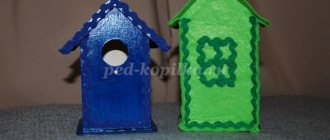
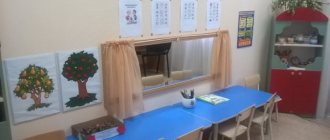

![Visual and didactic manual on sound automation [C] “Interesting cards”](https://lubcentre.ru/wp-content/uploads/naglyadno-didakticheskoe-posobie-po-avtomatizacii-zvuka-s-interesnye-kartochki-330x140.jpg)
